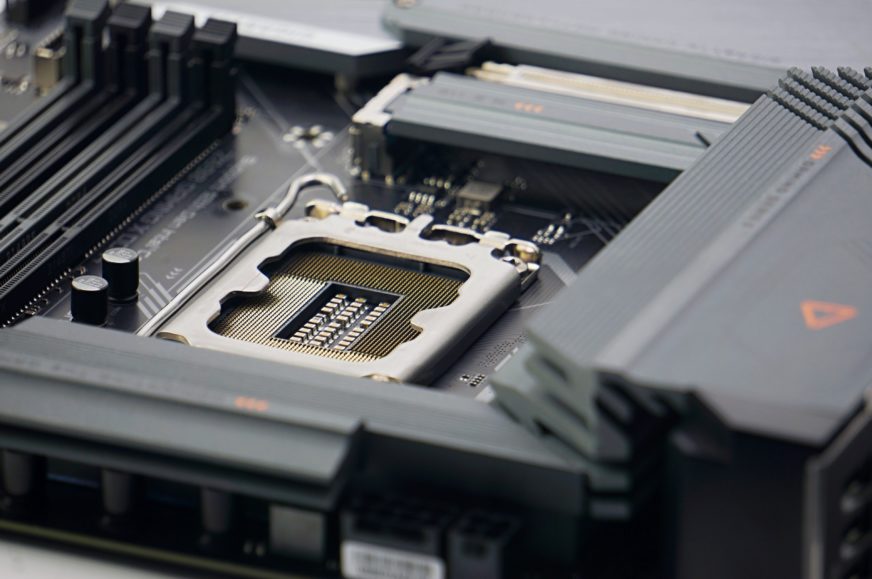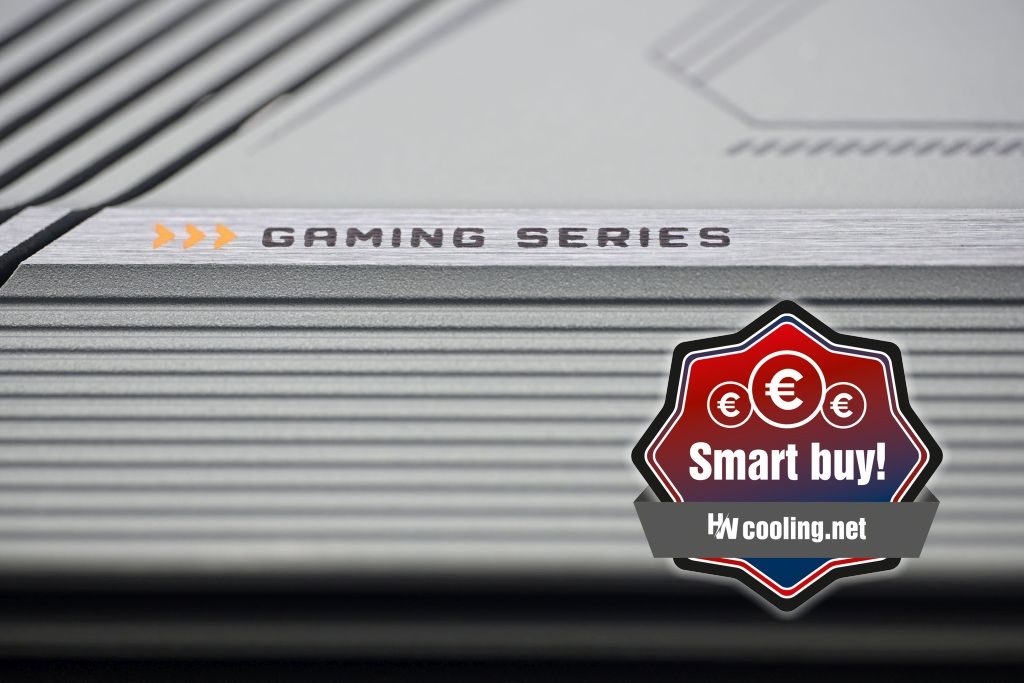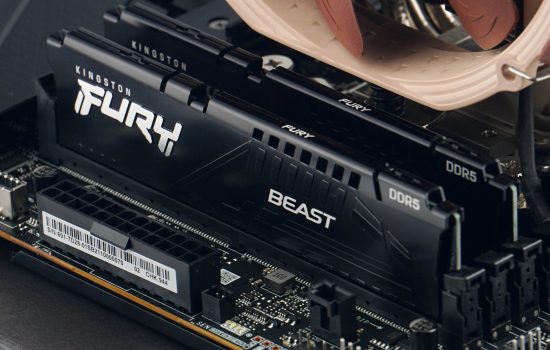Conclusion
Here we have a test of the latest motherboard, which is designed primarily for the needs of Intel Alder Lake processors. It is also compatible with Raptor Lakes, but most importantly we finally have a tough opponent for the MSI Pro Z690-A DDR4. That board has set the bar really high among the cheaper models. But Gigabyte also has one ace up its sleeve in the low-end segment. The Z690 Gaming X DDR4 motherboard is truly a class act!
Conclusion
There aren’t many boards priced at the Gigabyte Z690 Gaming X DDR4 level that prefer maximum all-core boost to 4.9 GHz for the Core i9-12900K under high load with AVX2 instructions. Often a negative offset is applied to “ease” the load, which is not the case here. This is why, for example, the best results are achieved in Cinebench. And thanks to the CPU’s robust and efficient power delivery (VRM), power draw is only average.
There are motherboards that, for similar computing performance, in this part (CPU power), have 30 W higher power draw, but also 50 W lower (such as the Gigabyte B660 Aorus Master DDR4). Although the power delivery here is one of the most efficient, the power supply plan is, so to speak, “balanced”.
While some boards with weaker VRMs have lower power draw to avoid ever overheating, this is the same case as the ROG Z690 Maximus Hero – there’s a definite emphasis on high stability too, the power supply is a little oversized. But it’s nothing that you can’t fine-tune manually for maximum overall efficiency. Claims of a strong power delivery are supported by thermal imaging. With relatively high power draw (and losses in the VRM) surface temperature is kept at pleasant values even without using a heatsink.
What’s notable are the few first places that the Z690 Gaming X DDR4 board has racked up. One is in cooling the SSD with a secondary (the big shared one) heatsink. The cooler in the first slot, on the other hand, behaves rather strangely. In what way? On SSDs, we measure temps from two points (from the controller and from the memory) and with this cooler the biggest difference is achieved (up to 16 °C), and we have repeated the mounting several times and everything is definitely fine in this respect. Further, we measured the lowest power draw in a single-threaded load (although there it follows with the lowest performance in the given test) and idle power draw is also low.
On the performance side of things, the first M.2 slot is in the lead for speed, and the USB 3.2 gen. 1 ports were no worse off. Network (Ethernet) speed is average, but above 288 MB/s in both directions. There were no performance anomalies in any of the tests, and all measured values are within the typically small differences between boards. In gaming tests, the Total War Saga: Troy (about 12 % below the best) scores poorly. In the rest of the games, the deviation from the average is negligible. The top results in Cinebench have already been mentioned.
Weaker (on par with the weakest) results are from the powerful Core i9 processor (12900K) when encoding x265 video, with the Core i5 (12400) the results are average. But it is above average in most tests, although we are still talking about differences within one or two percent. Relatively slower are the filters in Photoshop, but again super fast is the live video playback (H.264) in Adobe Premiere Pro or again excellent results in (de)encryption. But again, these are all such small differences that they’re practically not worth talking about. The important thing is that the Gigabyte Z690 Gaming X DDR4 never gets into a predicament where it somehow loses out significantly in performance.
During the basic tests of the fan connectors, we noticed that the system ones (SYS_fan1-4) required a higher PWM intensity to run. However, it is possible that this is not an isolated case and the fan control is, shall we say, weaker on more boards. So we won’t go into this in detail now (so as not to be unfair). In the future, however, we will also focus on fan connector tests, so that these can also be evaluated in a relevant way and it will be obvious which board has handled the fan regulation with more elegance.
Considering the set of all the features, their quality aspects, and the price this board sells for, it’s clear what editorial award the Gigabyte Z690 Gaming X DDR4 will end up with – “Smart buy!“.
English translation and edit by Jozef Dudáš
| Gigabyte Z690 Gaming X DDR4 (rev. 1.1) |
| + Powerful 19-phase power delivery (VRM)... |
| + ... handles even the Core i9-12900K without power limits with no performance loss |
| + Option to manually overclock the CPU by changing the multiplier |
| + Very attractive price/value ratio |
| + Above-standard features within the price category |
| + Up to four four-lane M.2 SSD slots... |
| + ... and three fast USB 3.2 gen. 2(×2) connectors on the rear I/O panel |
| + Very detailed fan management options |
| + Fast Ethernet connection in both directions |
| Has an SSD cooler with the highest TDP in tests... |
| - ... but the second (smaller) SSD cooler is one of the weakest |
| - Only one internal connector for two USB 3.2 gen. 1 ports |
| Approximate retail price: 221 EUR |
Test games are from Jama levova
Special thanks to Blackmagic Design (for licenses for DeNoise AI, Gigapixel AI and Sharpen AI) and Topaz Labs (for licenses for DeNoise AI, Gigapixel AI and Sharpen AI)
- Contents
- Gigabyte Z690 Gaming X DDR4 in detail
- What it looks like in the BIOS
- Methodology: Performance tests
- Methodology: How we measure power draw
- Methodology: Temperature and frequency measurements
- Test setup
- 3DMark
- Borderlands 3
- F1 2020
- Metro Exodus
- Shadow of the Tomb Raider
- Total War Saga: Troy
- PCMark and Geekbench
- Web performance
- 3D rendering: Cinebench, Blender, ...
- Video 1/2: Adobe Premiere Pro
- Video 2/2: DaVinci Resolve Studio
- Graphics effects: Adobe After Effects
- Video encoding
- Audio encoding
- Photos: Adobe Photoshop, Affinity Photo, ...
- (De)compression
- (De)cryption
- Numerical computing
- Simulations
- Memory and cache tests
- M.2 (SSD) slots speed
- USB ports speed
- Ethernet speed
- Power draw curve (EPS + ATX connector) w/o power limits
- Power draw curve (EPS + ATX connector) w/ Intel’s power limits
- Total power draw (EPS + ATX connector)
- Achieved CPU clock speed
- CPU temperatures
- VRM temperatures – thermovision of Vcore and SOC
- SSD temperatures
- Chipset temperatures (south bridge)
- Conclusion












